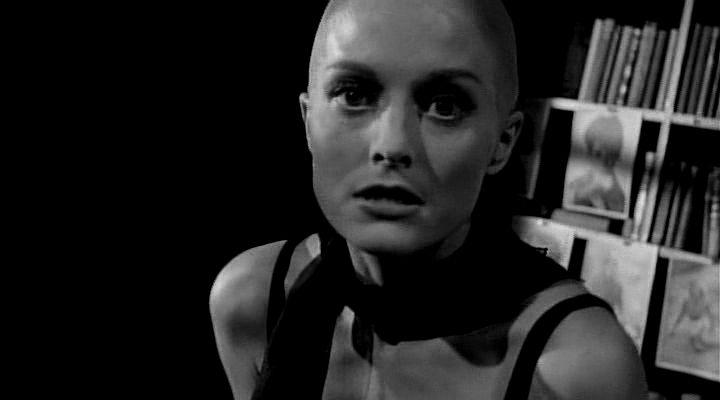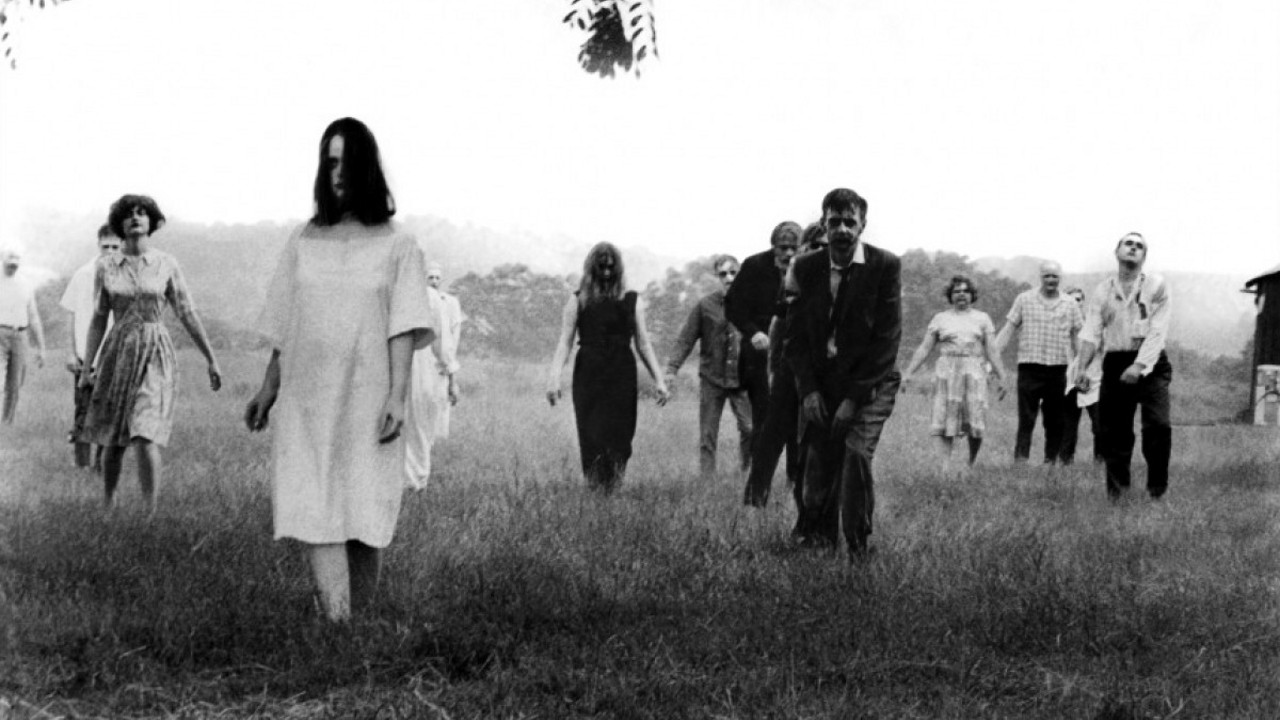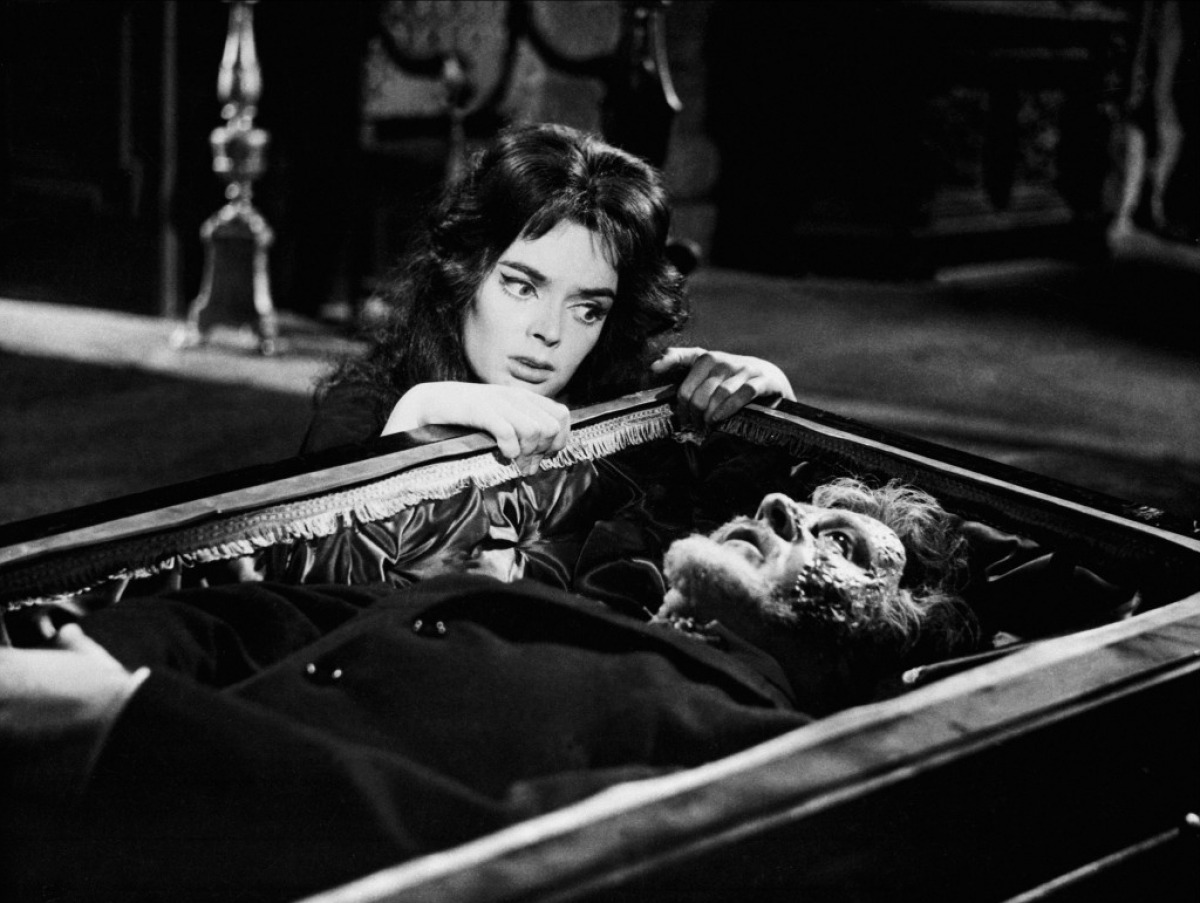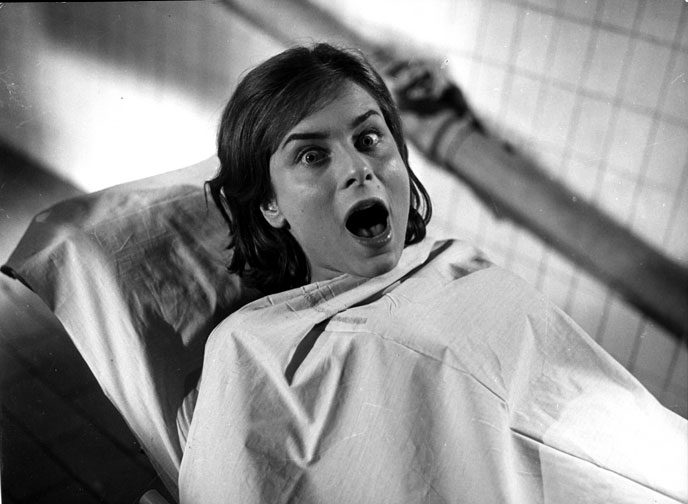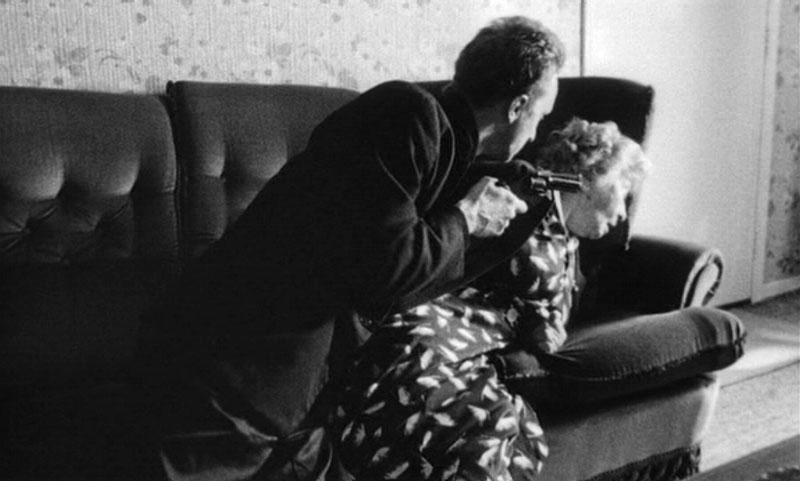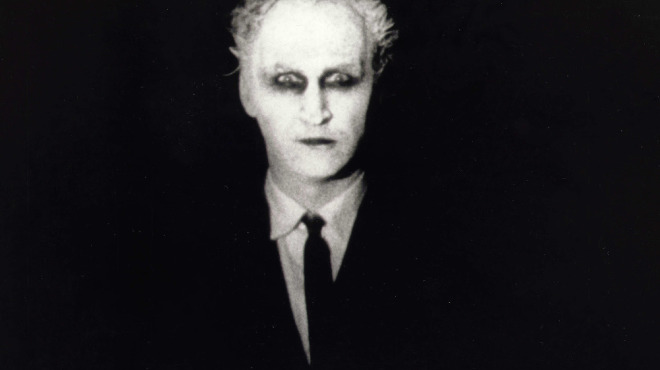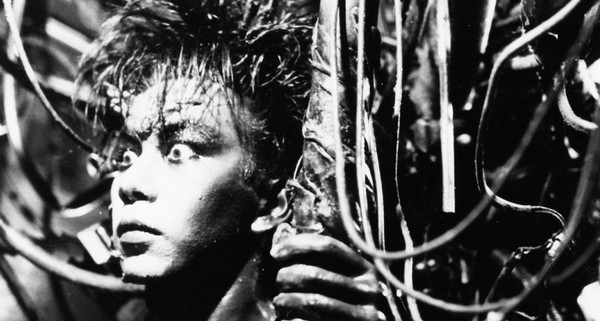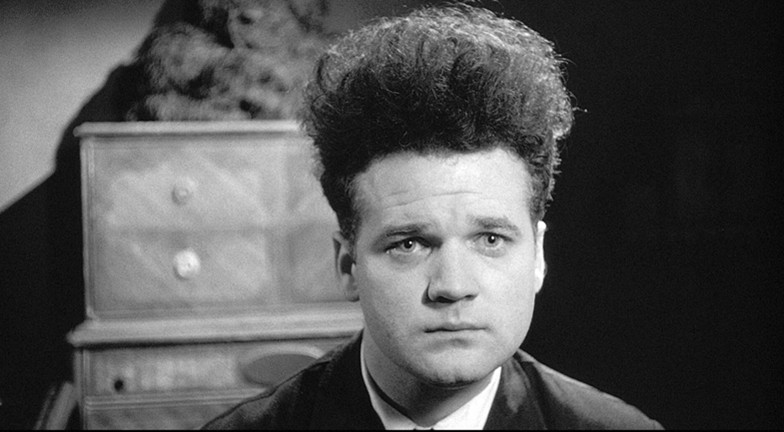8. Naked Kiss (Samuel Fuller, 1964)
One of the most memorable counterculture filmmakers, Samuel Fuller shocked and fascinated audiences with his raw and subversive portrayal of reality and his psychological character study. His characters are always as real as possible, and the endings do not rely on moral messages, which is more that we can say for most Hollywood movies at that time.
This particular movie features many taboo subjects, which even now would make for an interesting social commentary, imagine in the 1960’s. The main characters live in a world of dishonesty and evilness, dealing with moral corruption, prostitution, child abuse and harassment.
Naked Kiss can be also classified as a noir film – given its approach on mystery – where the B&W always played a fundamental role. Another Samuel Fuller production that deserves a mention in this list, dealing with similar taboo themes, is “Shock Corridor”, from 1963.
7. Night of the Living Dead (George A. Romero, 1968)
What was supposed to be just another low-budget horror movie, turned out to one of the most iconic films in the horror history. No one, in 1968, expected a revolution to come from an independent production by an unknown filmmaker, but it ended up re-creating the basic elements of a horror movie, coming to influence every major filmmaker and film of the genre.
Night of the Living Dead features many uncommon elements for horror movies in the 1960’s, such as characters that escape conventions and stereotypes – a black man as a protagonist and a woman – scary zombies, a great amount of blood – even if it was shot in a 16mm B&W, it is still shocking, and even more so because of the Black & White.
Romero went on to make several other horror movies, making for himself a prolific career inside the genre and becoming a household name. What is known today as his “Living Dead” series includes another five movies, and his creation also gave birth to several other movies within that same universe, unfortunately, none of these subsequent movies achieved to be as original and subversive as his 1968’s Night of the Living Dead.
6. Black Sunday (Mario Bava, 1960)
Starting the first wave of Italian horror, which gave place to an amazing tradition in quality horror films, Mario Bava’s “Black Sunday” – or “La Maschera del Demonio” – is definitely one major influence to horror movies as we know today, focusing on blood and gore, eerie atmospheres and heavy makeup to achieve total thrill. Vaguely inspired on Nikolai Gogol’s short story “Viy”, it tells the story of a witch burned by her own brother and then returning for revenge, 200 years later.
The B&W helps immensely to enhance the witch’s makeup and the overall horrific atmosphere. Even though it was considered too bloody for the censors at the time, it was a financial success, securing the career of filmmaker Mario Bava, which went on to produce other great horror films, such as “The Evil Eye” and “Black Sabbath”, both from 1963.
5. Eyes without a Face (Georges Franju, 1960)
This movie directed by Georges Franju is an Italian-French production wich caused immense controversy back when it came out, for its raw portrait of facial surgery and overall eerie tone to the story. Today, it is regarded as a one of a kind horror movie for its time, having a poetic tone and being influential to many filmmakers to come.
As written by Freud in his 1919 , “The Uncanny”, “Eyes without a face” deal mostly with the estrangement humans have with any kind of procedure that seems to alter our bodies, especially our faces, which are our identity to the world – the protagonist’s face is disfigured and covered with a mask for the most part of the film.
Also, many movies have come to deal with that same subject, such as Alejandro Amenábar’s “Open Your Eyes”, from 1997 (which later was remade in a Hollywood production called “Vanilla Sky”, in 2001) and George A. Romero’s “Bruiser”, from 2000, but “Eyes without a face” was definitely one of the first to approach the theme in both an artistic and gruesome way.
To this day, it remains a remarkable movie, working as a thriller, with its obscure atmosphere made possible by the Black & White, also as a fine discovery for any true horror film fans who like to scavenge through the depths of underground filmmaking.
4. Man Bites Dog (Rémy Belvaux, André Bonzel & Benoit Poelvoorde, 1992)
This Belgian film was produced on a very low-budget, having been executed by film students, and received an NC-17 rating for the “strong graphic violence”, starting with the official poster, which featured the protagonist shooting what looks like a baby pacifier. It features shocking scenes involving violence and death, in what could be called a “mockumentary”, seeing it deals with a satirical view of the day-to-day life of a serial killer.
The charismatic serial killer destroys everything and everyone that come his way, having an extremely misogynistic, xenophobic and racist behavior. As we follow him through his rampage, he calmly explains his “craft” to the film crew like a worker would explain the attributes of his job.
This genius approach to a documentary style, satirizing the “into the mind of a serial killer” movies rendered instant success and notoriety for the filmmakers involved and although the film is extremely violent, the Black & White used serves to reinforce the grim and obscure atmosphere.
3. Carnival of Souls (Herk Harvey, 1962)
This peculiar movie, directed by Herk Harvey, was an independent horror production, not gaining any attention at the moment it came out, but since then, it has received cult following and has been cited as an important influence by various contemporary filmmakers.
It has a low-budget and it is starred by unknown actors, but it manages to create a tense and dark atmosphere, as we follow the protagonist trying to escape from a mysterious figure known as “The Man”, that appears to her all the time. That has been happening since she was involved in a car accident, also, she is inexplicably drawn to a carnival located near the place she is staying.
What happens next are scary sequences, where the protagonist slowly loses her mind, and an ambiguous ending that will leave the audience thinking about what they have just watched. Once again an independent horror film pushes boundaries of creativity and cinematic innovation, supported by the Black & White.
2. Tetsuo the Iron Man (Shinya Tsukamoto, 1989)
Shinya Tsukamoto’s creation was shot on a 16mm camera – an extremely low-budget production – and contained graphic scenes of sex and violence. Nevertheless, it received cult-following and today it is regarded as an extreme piece of art inside the horror film universe. The story deals with a protagonist who, slowly, watches every part of his body become strange protruding pieces of metal as we follow him through a dazzling cyberpunk nightmare, filled with incredibly iron-themed detailed scenarios.
A great deal of that artistic success definitely must have been influenced by the fact Tetsuo was shot in B&W. It’s difficult not to notice the inspiration taken from Eraserhead (see number 1 on this list), as both films utilize B&W to enhance its message, that of which is to make the audience feel disturbed and uncertain about limits between real and fantasy.
1. Eraserhead (David Lynch, 1977)
Born from the reveries of creative director David Lynch, Eraserhead is more than just your pattern artistic film which gets lost in its own complexity; it’s a work of art. “A dream of dark and troubling things” is the tagline for this unique movie that deals with its protagonist’s fear of becoming a parent. Not only that, it succeeds in capturing extremely well the anxieties and phobias well known to most people, and the black and white only helps.
It was shot in black and white, seeing Lynch wanted to convey the emotions he had of living in Philadelphia, where the industrial background is predominant, and it also served perfectly well for the nightmarish atmosphere and the overall surrealistic narrative. Few directors have been able to produce such an artistic debut film like David Lynch did with Eraserhead, a movie so subversive and groundbreaking, it’s hard to imagine it not being shot in B&W.
Author Bio: Larissa G. Pierry is a Brazilian Psychology student, whose two great passions are writing and watching all kinds of movies, from old classics to trash horror (but has a pretty unhealthy obsession with David Lynch and John Waters). She pretends to be a full-time movie critic on her Letterboxd profile (http://letterboxd.com/tangerine23/), but someday really intends to do something professionally about her bad case of cinephilia.
